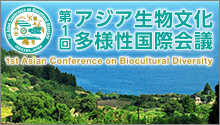These days, after two years, I have returned to my country, Spain. In my hometown, Denia, I spend precious time with my family. My view is now closer to the Japanese, as a foreigner in his own country. On this occasion, allow me to introduce you to the city where I was born.
DENIA
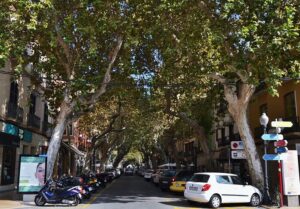
Street in Denia
Denia is a city of 50,000 inhabitants located in eastern Spain on the shores of the Mediterranean Sea below the Montgo Natural Park, the last end of a mountain chain that runs from the south to the Balearic Islands. Due to the beauty of its landscape, its good climate, and gastronomic culture, it was declared a Creative City of Gastronomy by UNESCO in 2015. The city receives many visitors in summer, with the tourism sector being the largest source of its economic income. To ponder a similarity with a Japanese city, I felt that I was in Denia the first time I went to Nagasaki.
The history of the city of Denia is ancient; it is believed that its origin is Greek where it was called Ἡμεροσκόπειον (Hemeroscopeio) “from this place the sunrise is seen”, due to its strategic location facing the sea. It was an important port during the Roman period where it was called Dianium (Denia), a Roman goddess. However, it was during the Muslim period where دانية (Dāniya) had its maximum cultural splendour. As a result of a long history, the city has many monuments, including its castle.
MY FAMILY

My family’s house is located in the port, as my grandfather used to build boats; I remember my days as a child helping him paint the boats or refloat them. At home, we always ate fish, red prawns, or sea urchins; it is for this reason that it makes me happy to live in Kanazawa because I can buy fresh fish and talk to the vendors in the Omicho market.
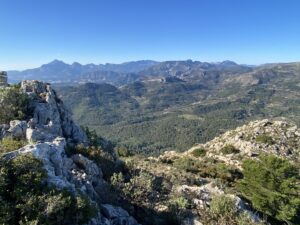
Mountain area in Denia
My other grandfather had a large orange field in the interior, and my days were also spent in the valleys climbing mountains. These beautifully shaped mountains have many caves, ravines, and native trees such as the holm oak, carob, and olive trees. I think that the impact of this landscape with its stone houses and the work of Antonio Gaudi made me become an architect.
BEING AN ARCHITECT
Once I graduated in architecture in Valencia, I returned to my hometown and had the opportunity to work as an architect in the Denia town hall. Although I was young and inexperienced, my boss and mayors allowed me to design open spaces, green areas, and buildings.
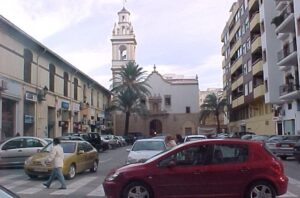
Saint Antonio Convent Square 1
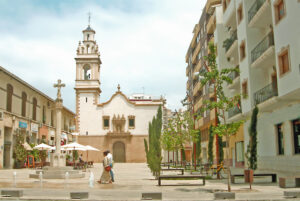
Saint Antonio Convent Square 2
In Spain, the plaza is par excellence’s social meeting place where children play and the elderly talk. When I go to the Japanese public bath, Sento, in Kanazawa, I think that it is the Spanish plaza of Japan because children are climbing the tubes, running, people always talk to me, and I feel my inclusion in Japanese society. As an example of my work, I give you the remodelling of the Saint Antonio Convent Square, the remodelling of the Fishermen Square. The purpose of the politicians was to recover these spaces like public squares for citizens since they had been occupied by vehicles. When I designed these plazas, I had three main ideas: to locate a natural stone pavement from the area, to plant native trees, such as cypress, pomegranates, hawthorn, from the valleys and mountains of the region to the city with fruits that would attract the birds, and that the furniture is as accessible to all citizens.

Fishermen Square
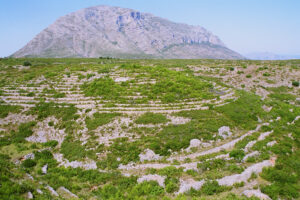
Montgo mountain
Other work I contributed was the master plan of the city, and the remodelling of the old town where there were some abandoned houses and providing ideas on the rehabilitation of the agricultural colony of vines on the slopes of Montgo mountain. This last project was exciting since it was land adjoining the natural park where during the 19th century, grapes were grown and processed as raisins that were exported to England and Australia.
KANAZAWA

Currently, working and living in Kanazawa, we are conducting a research project called SUN Project. This project aims to create a green infrastructure based on the conservation of existing green spaces such as gardens, water canals, spaces adjacent to rivers, etc., and the transformation of abandoned houses and lots into new ones. Spaces to be used by the community, I realize how the research topics here and there have many points in common, but they are carried out in totally different contexts. First of all, after having surveyed living beings in Japanese gardens in Kanazawa last year, we observed how the animals that flow in the rivers of Kanazawa are transported to the gardens through the city’s canals. Such rich biodiversity of Kanazawa is unimaginable in Spanish cities. The main reasons are the scarcity of rainwater or the connection between the mountains of the valleys and the cities’ green spaces. But, on the other hand, public management in Denia, with a lot of urban pressure, has made it develop new planning tools that make it possible to transform abandoned private space into public space more quickly than in Japanese cities.
URBAN NATURE
In conclusion, on both sides, East and West, cities with a more significant urban nature are more advanced in their time, are better positioned to face climate change, and provide numerous social, economic, and environmental benefits to their citizens and visitors. I wish that we all work together this year to create a more open and green society in Kanazawa. I want you to travel physically or mentally to think again about your country, city, and neighbourhoods to improve it as much as possible. Thank you very much always for your collaboration with the OUIK SUN project.
From Denia, Juan.





